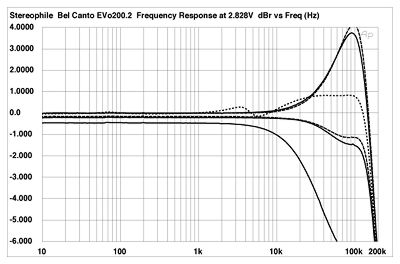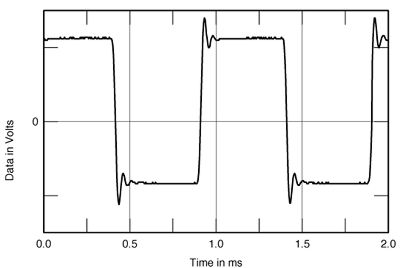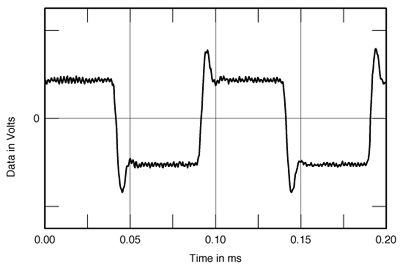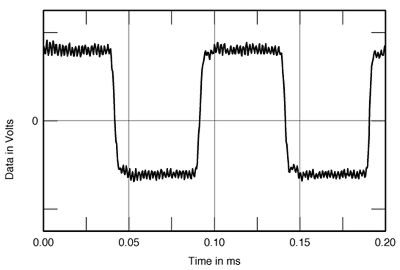| Columns Retired Columns & Blogs |
Bel Canto eVo 200.2 power amplifier Measurements
Sidebar 3: Measurements
Despite its high efficiency, the chassis of the Bel Canto eVo 200.2 was warm after the one-hour preconditioning period at one-third power, though not nearly so warm as would be the chassis of a traditional amplifier with a class-AB output stage. The voltage sensitivity into 8 ohms was low at 24.2dB with both balanced and unbalanced inputs. The single-ended input impedance was a high 109k ohms, this approximately doubling for the balanced input. The amplifier was polarity-correct via both inputs (the XLRs are wired with pin 2 "hot").
The source impedance was moderately high (for a solid-state design) at 0.3 ohm across most of the audioband, rising to 0.6 ohm at 20kHz. This is presumably due to the use of an LC low-pass filter on the amplifier's output to reduce the level of RF switching noise. This filter has to be tuned to the load, and Bel Canto's John Stronczer has chosen—sensibly, in my opinion—to optimize it for 4 ohms. As a result, the steady-state frequency response into 8 ohms (fig.1, top traces) shows a 4dB peak between 85kHz and 105kHz. The response into 4 ohms does roll off gently above the audioband, though the residual peak can still be seen. Only into 2 ohms (bottom trace) does the ultrasonic rolloff eliminate the peak, but the rolloff then starts below 10kHz, and reaches -1.6dB at around 20kHz.

Fig.1 Bel Canto eVo 200.2, frequency response at (from top to bottom at 4kHz): 2.83V into dummy loudspeaker load, 1W into 8 ohms, 2W into 4 ohms, and 4W into 2 ohms (1dB/vertical div.).
Associated with the ultrasonic response peak into higher impedances is an overshoot on the rising and trailing edges of squarewaves. Fig.2 shows this overshoot with a 1kHz squarewave driven into 8 ohms. I used an active sixth-order series low-pass filter supplied by Tripath to its manufacturer customers to eliminate the ultrasonic switching noise from this waveform, the overshoot otherwise being obscured. However, I believe the cycle of damped ringing on this waveform is actually due to the active filter, as it is relatively low in frequency and was unchanged when I dropped the load impedance to 4 ohms.

Fig.2 Bel Canto eVo 200.2, small-signal 1kHz squarewave into 8 ohms, with ancillary sixth-order low-pass filter at 20kHz.
Repeating the measurement with a 10kHz squarewave and eliminating the filter gave the waveform shown in fig.3. Switching noise can be seen on the tops and bottoms of the trace, but it has been reduced by the fact that I averaged 32 individual readings to produce the graph. (Each time you double the number of averages, you reduce the level of uncorrelated noise by 3dB.) The overshoot and half-cycle of ringing can now be more clearly seen to have a period about one tenth that of the squarewave, which better ties in with the response peak seen in fig.1. Dropping the load to 4 ohms eliminates the overshoot entirely (fig.4).

Fig.3 Bel Canto eVo 200.2, small-signal 10kHz squarewave into 8 ohms.

Fig.4 Bel Canto eVo 200.2, small-signal 10kHz squarewave into 4 ohms.
- Log in or register to post comments




































